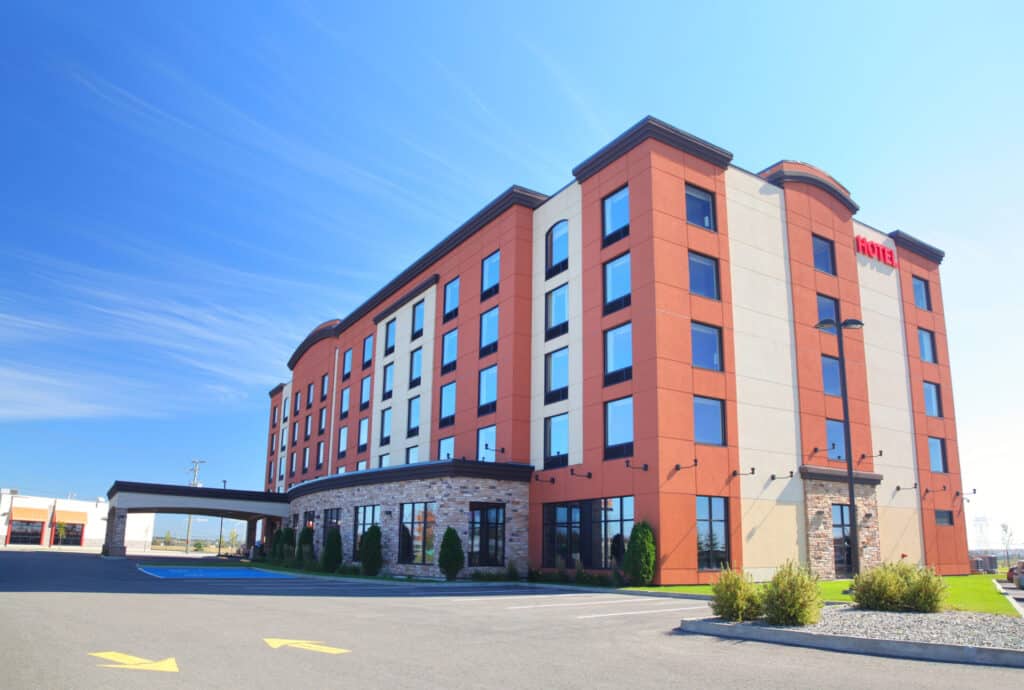
Extended-stay and select-service hotel trends in 2024 drive investor interest
Research shows investors are rising to meet demand in these sectors.
The enduring influence of consumer preferences since the global pandemic is pushing trends for select-service and extended-stay hotels, leading to investor optimism. That’s according to a report from JLL, a professional services firm that specializes in real estate and investment management. Their research, reported in U.S. Select-Service and Extended-Stay Hotel Trends and Outlook 2024, shows ripple effects in the industry, fueled by growing demand. Moreover, JLL reports consumers seem drawn to primary markets, and these particular hotel sectors are making up a larger percentage of the hotel liquidity in the nation, and for good reason (more on that in a moment).
For developers in La Crosse, Onalaska, Rochester and beyond who are considering expanding their portfolio into this sector, the report indicates these trends offer reason for optimism. Let’s take a closer look at the research report to explain why these specific types of hotels are drawing greater interest from both the consumer and the investor standpoints.
Key findings in hotel trends report for extended-stay and select-service lodging
Over the past couple of decades, there has been an evolution among extended-stay and select-service hotels. In the early 2000s, as JLL reports, these particular types of hotels were primarily owned and operated by individual owners, with few large-scale brands in the marketplace.
That has changed in recent history, and the offerings of these two types of hotels have overlapped. Select-service hotels, or limited-service hotels, have historically provided a budget or economy solution for consumers with a room-only or bed and bath-only with scant additional offerings. These days, research shows extended-stay hotels are offering business centers and self-service convenience markets while select-service hotels are offering extended-stay amenities like in-room kitchenettes and flexible workspaces. The result is that these hotel offerings have essentially molded into one while also extending the depth and breadth of their market penetration into primary locations, urban areas, and resorts.
This, in turn, has driven investor interest to its highest point in history, with the number of first-time buyers of these hotels topping a record 855 from 2020 to the third quarter of 2023. As a point of reference, this represents a three-fold increase in the number of first-time buyers from the years 2008-2011. According to the study, the average yield for these two lodging types combined reached a 10-year high over the first nine months of last year. And the average deal total hit a low of $16 million.
Shifts indicate changes in consumer demand for these types of hotels. Twenty years ago, select-service hotels marketed to budget-conscious business travelers who wanted a short stay with breakfast. Extended-stay hotels meanwhile targeted contract workers and families who were relocating and needed a temporary stay with a full kitchen.
Since the pandemic, the customer base for these hotels has shifted as more consumers seek longer-term lodging for remote work or improved work-life balance. This demand has compelled these hotels to provide more of the comforts of home as well as functional workspaces for digital nomads and remote workers.
In addition, select-service hotels can now be seen providing fitness amenities and coworking spaces, and both of these hotel sectors now provide services for leisure travelers and those who combine business and leisure, otherwise known as “bleisure.” As a result, these hotels have seen an unprecedented surge in demand, with experts forecasting demand for a billion hotel room nights this year. This represents an 18% increase over the long-term average in 2001.
Supply, too, is shifting, according to the JLL report, with movement toward the top 25 markets versus secondary and tertiary markets. This has driven hotel room supply in the top 25 markets up by more than 67% in the decade from the fall of 2013. Industry experts expect more growth for these hotel sectors in urban and resort locations in top 25 markets.
In a particularly favorable trend for investors, these hotel sectors have contributed more than 52% of U.S. hotel liquidity in 2023, again the highest proportion in history. For investors looking for reliable risk-adjusted returns, these sectors of late offer a compelling performance compared to the rest of the industry.
One evergreen consideration for investors, of course, is financing for commercial construction projects. The study notes that lenders perceive select-service and extended-stay hotels as attractive prospects due to the durable profit margins and lower loan amounts. This may represent an opportunity for investors who have faced financing challenges amid capital market unpredictability.
Considering building a hotel in Wisconsin or Minnesota?
With the design-build approach to your project, you can rest assured the burden on your shoulders is reduced while your project team collaborates to deliver on your vision for an extended-stay or select-service lodging property. It all begins with our robust predevelopment and preconstruction services that will position you optimally for project success. Contact our design and build team today to meet the skilled professionals with a proven track record of success in the 7 Rivers Region, who are ready to partner with you on your next commercial build.